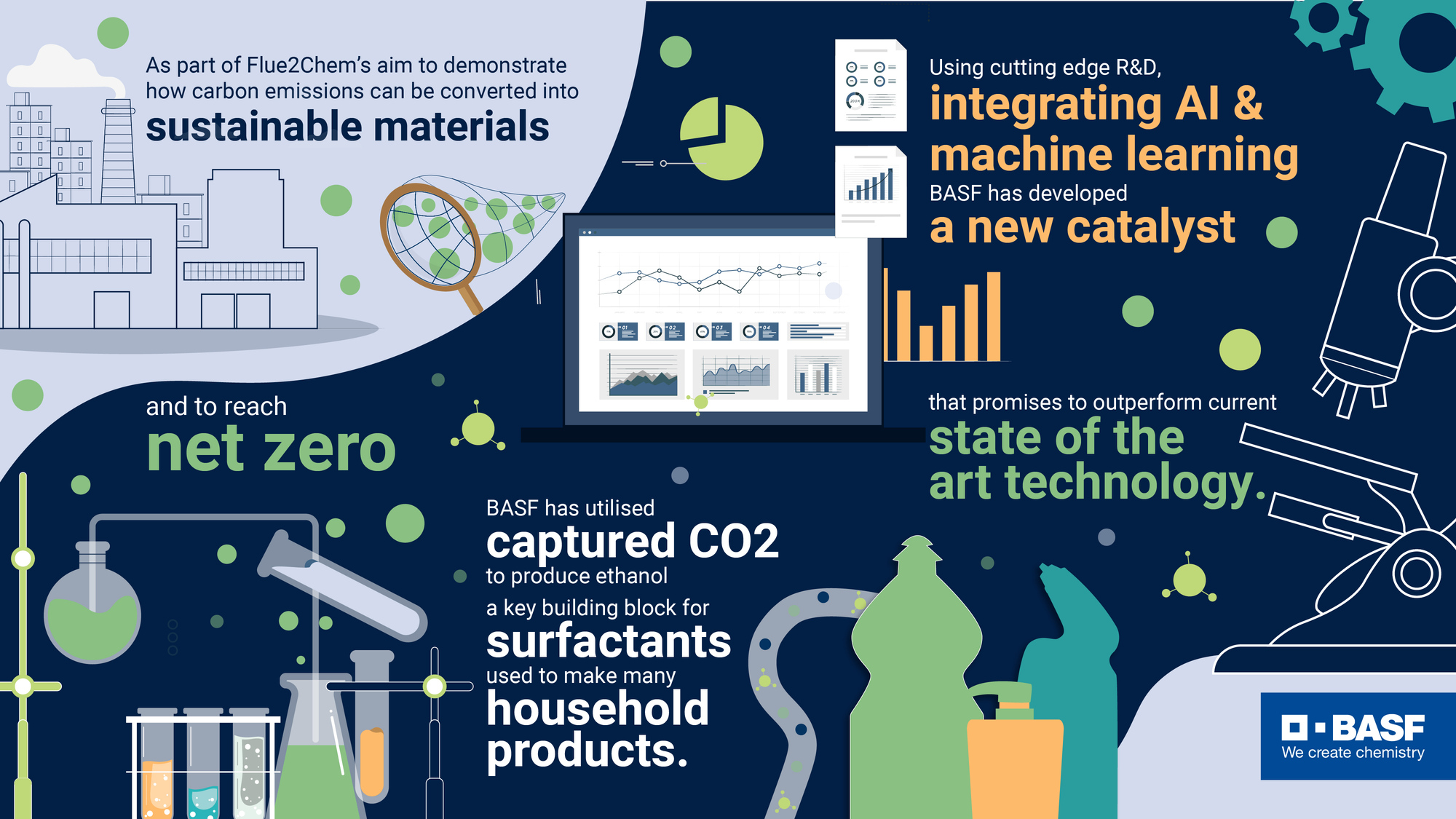Manufacturing chemical raw materials using captured CO2: pipedream or reality?
Darren Budd, Commercial Director, BASF UK and Ireland
| BASF
17 organisations have come together under the Flue2Chem consortium to explore how CO2 emissions from industrial processes can be transformed into new raw materials.
In an exciting development for the UK, a consortium of 17 organisations representing an entire value chain have come together for the first time to explore how alternative sources of carbon, such as captured CO2, can help reduce our reliance on virgin fossil fuels for everyday products. This collaboration, supported by the UK government and led by the Society of Chemical Industry and Unilever, includes global product manufacturers, universities, and other organisations.
The global context of the challenge is significant: over 5 per cent of the world’s carbon emissions stem from virgin fossil fuels used to produce chemical raw materials such as everyday goods but also the materials needed to deploy green technologies such as hydrogen and renewable energy generation. In the UK, Flue2Chem’s ambition is to demonstrate how we could reduce approximately 15-20 million tonnes of carbon dioxide emissions each year.
BASF is very proud to be a part of the Flue2Chem consortium, as the project’s ambitions align with our own to reach net-zero by 2050 and to reduce industry reliance on virgin carbon feedstocks while identifying sustainable alternative sources of carbon to meet society's diverse needs – ranging from pharmaceuticals to household items, as well as advanced manufacturing technologies in sectors such as construction, automotive, and renewable energy.
As part of the Flue2Chem project, BASF has successfully demonstrated how captured CO2 can be converted to ethanol, a vital building block for many chemical molecules, including surfactants used to make everyday household goods such as detergents.
Using captured CO2 from industrial emitters in the UK, BASF researchers at our global R&D hub in Ludwigshafen, Germany, developed a new catalyst that promises to outperform existing technologies in producing ethanol from captured CO2 and hydrogen. This ethanol will then be further processed by Flue2Chem partners to make surfactants which will be used to make consumer goods.
 Click the image to watch the video
Click the image to watch the video
Over the last 20 months, BASF has optimised the catalytic conversion process to produce ethanol more sustainably and effectively. By integrating cutting-edge research and development techniques, along with AI and machine learning, we have accelerated the development of new catalysts. This innovative process enables us to conduct multiple tests simultaneously while using predictive models to improve the material properties of the catalysts more efficiently. The catalysts were also tested under standard processing conditions to reflect how they would perform in real-world conditions. This is a critically important aspect of the work of Flue2Chem, as we need to embed these innovations into existing chemical value and supply chains, so they have greater potential to be scaled up quickly and efficiently.
With this novel catalyst and process, BASF’s research holds the potential to unlock numerous applications for using captured CO2 as a sustainable raw material for chemicals in a net-zero future, as ethanol is not only crucial for surfactant production but also plays a vital role in creating various other chemicals used in cosmetics, industrial applications, and pharmaceuticals.
Looking ahead, further collaboration is essential to enable the processes developed through the Flue2Chem partnership to be deployed at scale, creating new business models across the industry. Projects like Flue2Chem allow us to collaborate across the value chain, developing the technologies necessary for this transition. The achievements of the Flue2Chem consortium to date, including BASF’s development of a new catalyst and catalytic process, are bringing us closer to realizing the full potential of manufacturing new chemicals from carbon capture and utilisation (CCU).
With the right investment and regulatory environment, the technologies emerging from value chain initiatives like Flue2Chem can help realize the UK’s ambitions for growth while seizing opportunities in new and emerging sectors.
BASF believes that the potential of CCU must be thoroughly explored due to its role in keeping carbon underground. The best approach to fossil carbon exploitation is to prevent it entirely. This requires considering the prerequisites for CCU at scale, including large quantities of renewable energy and competitively priced hydrogen, which are also essential for the energy transition. With a strong track record of innovation in chemistry, BASF is at the forefront of developing and testing processes that convert captured CO2 into valuable new chemical raw materials.
As a leader in carbon capture and storage and hydrogen deployment, the UK should explore the potential of CCU more specifically in the context of both industrial decarbonisation and the upcoming industrial strategy. Projects like Flue2Chem can provide very useful insights into the changes and policies needed to successfully capitalise on the growth potential of R&D innovations.
For more information on BASF's role in the Flue2Chem consortium, watch the video below:
